Class 12 Maths question paper will have 1-2 Case Study Questions. These questions will carry 5 MCQs and students will attempt any four of them. As all of these are only MCQs, it is easy to score good marks with a little practice. Class 12 Maths Case Study Questions are available on the myCBSEguide App and Student Dashboard.
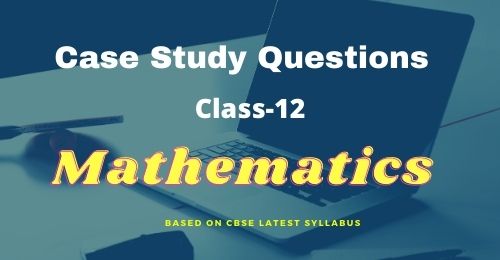
Why Case Studies in CBSE Syllabus?
CBSE has introduced case study questions in the CBSE curriculum recently. The purpose was to make students ready to face real-life challenges with the knowledge acquired in their classrooms. It means, there was a need to connect theories with practicals. Whatsoever the students are learning, they must know how to apply it in their day-to-day life. That’s why CBSE is emphasizing case studies and competency-based education.
Case Study Questions in Maths
Let’s have a look over the class 12 Mathematics sample question paper issued by CBSE, New Delhi. Question numbers 17 and 18 are case study questions.
Focus on concepts
If you go through each MCQ there, you will find that the theme/case study is common but the questions are based on different concepts related to the theme. It means, that if you have done ample practice on the various concepts, you can solve all these MCQs in minutes.
Easy Questions with a Practical Approach
The difficulty level of the questions is average or say easy in some cases. On the other hand, you get four options to choose from. So, you get two levels of support to get full marks with very little effort.
Practice Questions Regularly
Most of the time we feel that it’s easy and neglect it. But in the end, we have to pay for this negligence. This may happen here too. Although it’s easy to score good marks on the case study questions if you don’t practice such questions, you may lose your marks. So, we suggest students should practice at least 30-40 such questions before writing the board exam.
12 Maths Case-Based Questions
We are giving you some examples of case study questions here. We have arranged hundreds of such questions chapter-wise on the myCBSEguide App. It is the complete guide for CBSE students. You can download the myCBSEguide App and get more case study questions there.
Case Study Question – 1
Two schools P and Q want to award their selected students on the values of Tolerance, Kindness, and Leadership. The school P wants to award Rs x each, Rs y each and Rs z each for the three respective values to 3, 2 and 1 students respectively with total award money of Rs. 2200.
School Q wants to spend Rs 3100 to award its 4, 1 and 3 students on the respective values (by giving the same award money to the three values as school P). If the total amount of award for one prize on each value is Rs1200, using matrices, find the following:

-
- What is award money for Tolerance?
- 350
- 300
- 500
- 400
- What is the award money for Leadership?
- 300
- 280
- 450
- 500
- What is the award money for Kindness?
- 500
- 400
- 300
- 550
- If a matrix A is both symmetric and skew-symmetric, then
- A is a diagonal matrix
- A is a scalar matrix
- A is a zero matrix
- A is a square matrix
- If A and B are two matrices such that AB = B and BA = A, then B2 is equal to
- What is award money for Tolerance?
-
-
- B
- A
- 1
- 0
-
Case Study Question – 2
A man has an expensive square shape piece of golden board of size 24 cm is to be made into a box without top by cutting from each corner and folding the flaps to form a box.
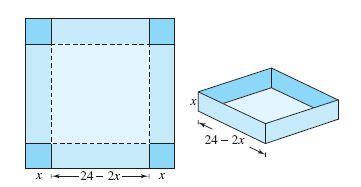
- Volume of open box formed by folding up the flap:
- 4(x3 – 24x2 + 144x)
- 4(x3– 34x2 + 244x)
- x3 – 24x2 + 144x
- 4x3 – 24x2 + 144x
- In the first derivative test, if dy/dx changes its sign from positive to negative as x increases through c1, then function attains a:
- Local maxima at x = c1
- Local minima at x = c1
- Neither maxima nor minima at x = c1
- None of these
- What should be the side of the square piece to be cut from each corner of the board to behold the maximum volume?
- 14 cm
- 12 cm
- 4 cm
- 5 cm
- What should be the maximum volume of open box?
- 1034 cm3
- 1024 cm3
- 1204 cm3
- 4021 cm3
- The smallest value of the polynomial x3 – 18x2 + 96x in [0, 9] is:
- 126
- 0
- 135
- 160
Case Study Questions Matrices -1
Read the case study carefully and answer any four out of the following questions:
Three friends Ravi, Raju and Rohit were buying and selling stationery items in a market. The price of per dozen of Pen, notebooks and toys are Rupees x, y and z respectively.
Ravi purchases 4 dozen of notebooks and sells 2 dozen pens and 5 dozen toys. Raju purchases 2 dozen toys and sells 3 dozen pens and 1 dozen of notebooks. Rohit purchases one dozen of pens and sells 3 dozen notebooks and one dozen toys.
In the process, Ravi, Raju and Rohit earn ₹ 1500, ₹ 100 and ₹400 respectively.

Answer the following questions using the matrix method:
- What is the price of one dozen of pens?
- ₹ 100
- ₹ 200
- ₹ 300
- ₹ 400
- What is the total price of one dozen of pens and one dozen of notebooks?
- ₹ 100
- ₹ 200
- ₹ 300
- ₹ 400
- What is the sale amount of Ravi?
- ₹ 1000
- ₹ 1100
- ₹ 1300
- ₹ 1200
- What is the amount of purchases made by all three friends?
- ₹ 1200
- ₹ 1500
- ₹ 1300
- ₹ 1400
- What is the price of sales made by all three friends?
- ₹ 3000
- ₹ 2500
- ₹ 2700
- ₹ 2400
Answer Key:
- (a) ₹ 100
- (c) ₹ 300
- (d) ₹ 1200
- (b) ₹ 1500
- (c) ₹ 2700
Case Study Questions Matrices – 2
Read the case study carefully and answer any four out of the following questions:
Once a mathematics teacher drew a triangle ABC on the blackboard. Now he asked Jose,” If I increase AB by 11 cm and decrease the side BC by 11 cm, then what type of triangle it would be?”
Jose said, “It will become an equilateral triangle.”
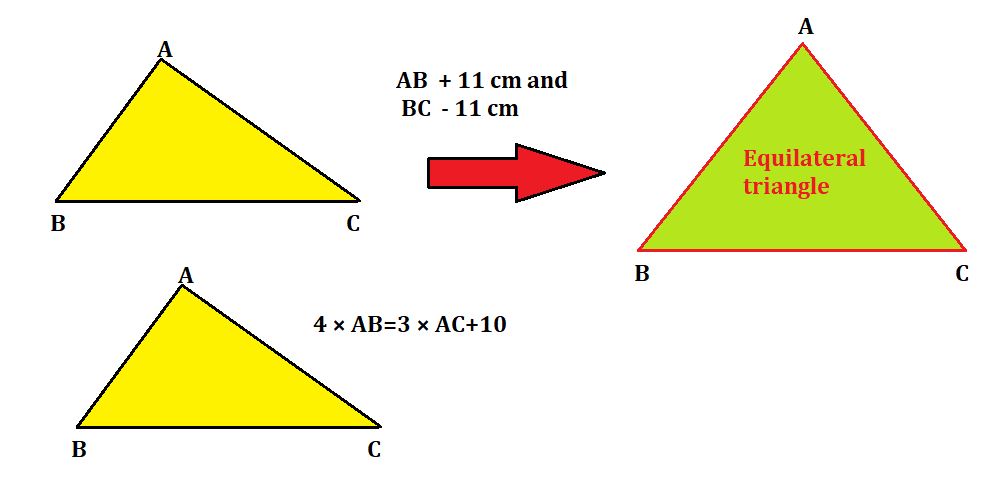
Again teacher asked Suraj,” If I multiply the side AB by 4 then what will be the relation of this with side AC?”
Suraj said it will be 10 cm more than the three times AC.
Find the sides of the triangle using the matrix method and answer the following questions:
- What is the length of the smallest side?
- 54 cm
- 43 cm
- 30 cm
- 35 cm
- What is the length of the largest side?
- 54 cm
- 43 cm
- 65 cm
- 35 cm
- What is the perimeter of the triangle?
- 150 cm
- 160 cm
- 165 cm
- 162cm
- What is the side of the equilateral triangle formed?
- 54 cm
- 43 cm
- 30 cm
- 35 cm
- What is the order of the matrix formed?
- 3 × 3
- 2 × 3
- 3 × 2
- 2 × 2
Answer Key:
- (b) 43 cm
- (c) 65 cm
- (d) 162 cm
- (a) 54 cm
- (a) 3 × 3
Case Study Questions Determinants – 01
DETERMINANTS: A determinant is a square array of numbers (written within a pair of vertical lines) that represents a certain sum of products.
We can solve a system of equations using determinants, but it becomes very tedious for large systems. We will only do 2 × 2 and 3 × 3 systems using determinants. Using the properties of determinants solve the problem given below and answer the questions that follow:
Three shopkeepers Ram Lal, Shyam Lal, and Ghansham are using polythene bags, handmade bags (prepared by prisoners), and newspaper envelopes as carrying bags. It is found that the shopkeepers Ram Lal, Shyam Lal, and Ghansham are using (20,30,40), (30,40,20), and (40,20,30) polythene bags, handmade bags, and newspapers envelopes respectively. The shopkeeper’s Ram Lal, Shyam Lal, and Ghansham spent ₹250, ₹270, and ₹200 on these carry bags respectively.
- What is the cost of one polythene bag?
- ₹ 1
- ₹ 2
- ₹ 3
- ₹ 5
- What is the cost of one handmade bag?
- ₹ 1
- ₹ 2
- ₹ 3
- ₹ 5
- What is the cost of one newspaper bag?
- ₹ 1
- ₹ 2
- ₹ 3
- ₹ 5
- Keeping in mind the social conditions, which shopkeeper is better?
- Ram Lal
- Shyam Lal
- Ghansham
- None of these
- Keeping in mind the environmental conditions, which shopkeeper is better?
- Ram Lal
- Shyam Lal
- Ghansham
- None of these
Answer Key:
- (a) ₹1
- (b) ₹ 2
- (d) ₹ 5
- (b) Shyam Lal
- (a) Ram Lal
Case Study Questions Determinants – 02
Matrices/Determinants: In linear algebra, the determinant is a scalar value that can be computed from the elements of a square matrix and encodes certain properties of the linear transformation described by the matrix. The determinant of a matrix A is denoted det(A) or |A|. Using determinants/ Matrices calculate the following:
Ram purchases 3 pens, 2 bags, and 1 instrument box and pays ₹ 41. From the same shop, Dheeraj purchases 2 pens, 1 bag, and 2 instrument boxes and pays ₹29, while Ankur purchases 2 pens, 2 bags, and 2 instrument boxes and pays ₹44.

Read the above information and answer the following questions:
- Find the cost of one pen.
- ₹ 2
- ₹ 5
- ₹ 10
- ₹15
- What are the cost of one pen and one bag?
- ₹ 12
- ₹ 15
- ₹ 17
- ₹25
- What is the cost of one pen & one instrument box?
- ₹ 7
- ₹ 12
- ₹ 17
- ₹25
- What is the cost of one bag & one instrument box?
- ₹ 20
- ₹ 25
- ₹ 10
- ₹15
- Find the cost of one pen, one bag, and one instrument box.
- ₹ 22
- ₹ 25
- ₹ 20
- ₹24
Answer Key:
- (a) ₹ 2
- (c) ₹17
- (a) ₹7
- (a) ₹20
- (a) ₹22
Case Study Questions Application of Derivatives
A telephone company in a town has 500 subscribers on its list and collects fixed charges of 300 per subscriber per year. The company proposes to increase the annual subscription and it is believed that for every increase of 1 one subscriber will discontinue the service.
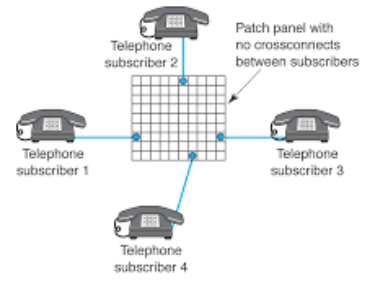
- If x be the annual subscription then the total revenue of the company after increment will be:
- R(x) = -x2 + 200x + 150000
- R(x) = x2 – 200x – 140000
- R(x) = 200x2 + x + 150000
- R(x) = -x2 + 100 x + 100000
- To find maximum profit we put
- R'(x) = 0
- R'(x) > 0
- R'(x) < 0
- R”(x) = 0
- How much fee the company should increase to have maximum profit?
- Rs. 150
- Rs. 100
- Rs. 200
- Rs. 250
- Find the maximum profit that the company can make if the profit function is given by P(x) = 41 + 24x – 18x2.
- 25
- 44
- 45
- 49
- Find both the maximum and minimum values respectively of 3x4 – 8x3 + 48x + 1 on the interval [1, 4].
- -63, 257
- 258, -63
- 257, -63
- -63, -257
Answer Key:
- (a) -x2 + 200x + 150000
- (a) R'(x) = 0
- (b) Rs.100
- (d) 49
- (c) 257, -63
Case Study Questions Vector Algebra
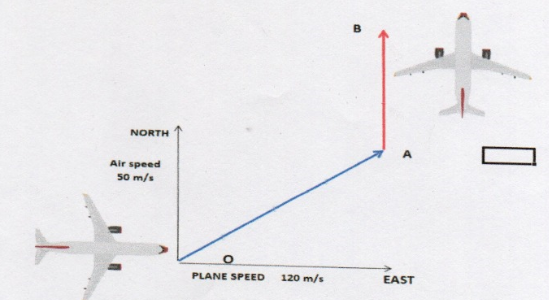
A plane started from airport O with a velocity of 120 m/s towards east. Air is blowing at a velocity of 50 m/s towards the north As shown in the figure.
The plane travelled 1 hr in OA direction with the resultant velocity. From A and B travelled 1 hr with keeping velocity of 120 m/s and finally landed at B.
- What is the resultant velocity from O to A?
- 100 m/s
- 130 m/s
- 120 m/s
- 170 m/s
- What is the direction of travel of plane O to A with east?
- tan−1(5/12)
- tan−1(12/3)
- 40o
- 30o
- What is the total displacement from O to A?
- 500 km
- 468 km
- 432 km
- 400 km
- What is the resultant velocity from A to B?
- 120 m/s
- 70 m/s
- 170 m/s
- 200 m/s
- What is the displacement from A to B?
- 550 km
- 432 km
- 600 km
- 612 km
Answer Key:
- (b) 130 m/s
- (a) tan−1(5/12)
- (b) 468 km
- (b) 170 m/s
- (d) 612 km
More Case Study Questions
These are only some samples. If you wish to get more case study questions for CBSE class 12 maths, install the myCBSEguide App. It has class 12 Maths chapter-wise case studies with solutions.
12 Maths Exam pattern
Question Paper Design of CBSE class 12 maths is as below. It clearly shows that 20% weightage will be given to HOTS questions. Whereas 55% of questions will be easy to solve.
| S.No. | Typology of Questions | Total Marks | % Weightage |
| 1. | Remembering: Exhibit memory of previously learned material by recalling facts, terms, basic concepts, and answers. Understanding: Demonstrate understanding of facts and ideas by organizing, comparing, translating, interpreting, giving descriptions, and stating main ideas |
44 | 55 |
| 2. | Applying: Solve problems to new situations by applying acquired knowledge, facts, techniques and rules in a different way. | 20 | 25 |
| 3. | Analysing: Examine and break information into parts by identifying motives or causes. Make inferences and find evidence to support generalizations |
16 | 20 |
| Evaluating: Present and defend opinions by making judgments about information, the validity of ideas, or quality of work based on a set of criteria. |
|||
| Creating: Compile information together in a different way by combining elements in a new pattern or proposing alternative solutions |
|||
| Total | 80 | 100 |
- No. chapter-wise weightage. Care to be taken to cover all the chapters
- Suitable internal variations may be made for generating various templates keeping the overall weightage to different forms of questions and typology of questions the same.
Choice(s):
There will be no overall choice in the question paper.
However, 33% of internal choices will be given in all the sections
| INTERNAL ASSESSMENT | 20 MARKS |
| Periodic Tests ( Best 2 out of 3 tests conducted) | 10 Marks |
| Mathematics Activities | 10 Marks |
12 Maths Prescribed Books
- Mathematics Part I – Textbook for Class XII, NCERT Publication
- Mathematics Part II – Textbook for Class XII, NCERT Publication
- Mathematics Exemplar Problem for Class XII, Published by NCERT
- Mathematics Lab Manual class XII, published by NCERT

Test Generator
Create question paper PDF and online tests with your own name & logo in minutes.
Create Now
Learn8 App
Practice unlimited questions for Entrance tests & government job exams at ₹99 only
Install Now